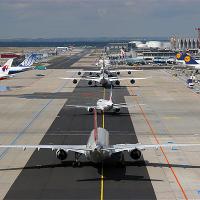[ad_1]
BRUSSELS – Europe’s airport trade association is reacting to the report delivered to the European Commission by the ‘Wise Persons Group’, which sets out recommendations on the future of air traffic management (ATM) in Europe*.
ATM reform & limate action
The report takes stock of the failures of the Single European Sky and of the need for reform, due to the impact of current ATM inefficiencies on the travelling public and airspace users. While ATM inefficiencies also impact airports at various levels, ACI Europe is especially concerned with their impact on the environment – and in particular climate change. Last year, these inefficiencies led to an additional +5.2% of CO2 emitted by aircraft in Europe.
Given the recent IPCC call for urgent and drastic measures to limit global warming** and the European Commission’s strategic vision towards a carbon neutral economy for Europe***, finally delivering the Single European Sky must become a key priority for EU Member States. This is no longer just an issue for transport policy – it is now a test of Europe’s resolve for Climate Action in relation to aviation.
Network centralised approach & Airports/ATM integration
The report advocates a centralised approach as the enabler for delivering efficiencies, based on new roles and responsibilities for the Network Manager – a function currently performed by Eurocontrol. Accordingly, the Network Manager would in the future come to act simultaneously as airspace manager, ATM capacity manager and infrastructure manager. This means that the Network Manager would encompass enhanced day-to-day operational network functions, strategic oversight of ATM capacity planning & delivery, and also replace the current SESAR Deployment Manager.
Europe’s airports do not object to such an approach – not least because the current ATM set up has proved unable to ensure de-fragmentation, which is instrumental to achieving greater efficiencies.
ACI Europe notes that the report rightly calls for increased operational integration between airports and ATM through data sharing and collaboration. This is welcome. Indeed, ground capacity and airspace capacity are intrinsically interdependent. Ultimately, there will only be as much usable capacity in the sky as there is on the ground – and vice versa. However, the report mainly focuses on En-Route capacity and does not follow a total aviation system approach.
Governance & management challenges ahead
For the proposed new centralized approach to succeed, Europe’s airports consider that a new modus operandi based on increased cooperation between ANSPs, airlines, airports and the Network Manager as well as changes in ‘operational culture’ is essential. This will require a reconsideration of the governance and management of the Network Manager – to ensure an effective and meaningful industry involvement in its new roles & responsibilities. From a passenger experience perspective, while ATM network efficiency is key, trade-offs might be needed to protect local airport capacity.
Europe’s airports support the recommendation for tower services to be based on contractual relationships as a key enabler for airport & ATM integration. This is however dependent on ANSPs’ acceptance and regulators providing the right framework.
ACI Eutrope looks forward to continued engagement with the European Commission and EU Member States and to becoming fully involved in the follow-up of the report.
*The report of the Wise Persons Group on the future of the Single European Sky is available for download here.
**The International Panel on Climate Change (IPCC) is a body of scientists and economists – first convened by the United Nations (UN) in 1988 – which periodically produces summaries of the “scientific basis of climate change, its impacts and future risks, and options for adaptation and mitigation”. The latest report published in October 2018, summarized what it would take to achieve the 1.5°C limit and what the consequences would be of missing it.
Read the special report here.
***In November 2018, the European Commission adopted a strategic long-term vision for a prosperous, modern, competitive and climate neutral economy by 2050. Find out more about it here.
You can read more of the news on source
 Travelsmart
Travelsmart



